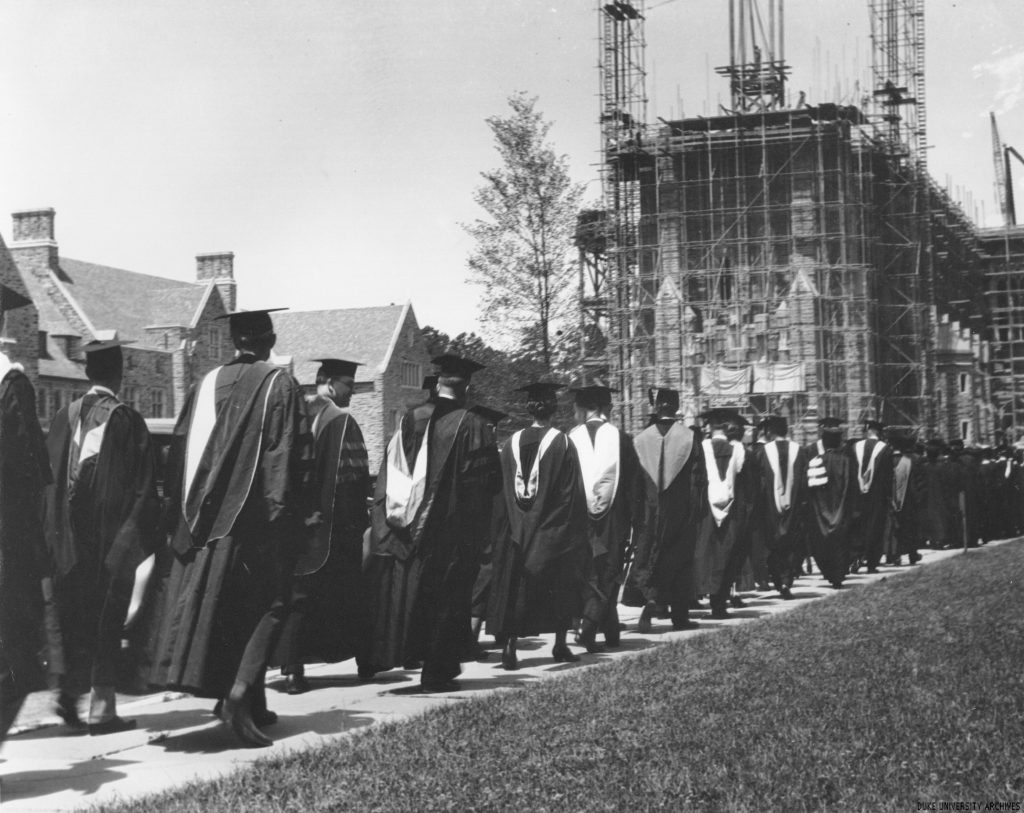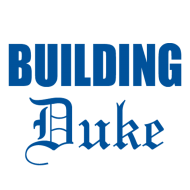
Building Duke explores the history of the conception, design, and construction of Duke campus as well as its changes and expansions through time. The project has two principal aims:
- to offer a historical narrative of the physical environment that the Duke community inhabits;
- to explore the desires and visions that, through time, have materialized in the making of Duke campus—the ways in which the Duke community has imagined itself and the ways in which it has imprinted such vision(s) onto its physical environment.
The team believes the Building Duke project is especially relevant at a cultural and political moment when physical space and its historical connotations are at the center of a heated public debate.
Goals
Building Duke combines historical research with digital technologies. The project will be articulated in two main components:
- a chronological timeline of Duke’s buildings, landscape, and infrastructure which will explore in detail the various phases of the campus’ development, from conception to land acquisition, design, and construction;
- a series of historical narratives along thematic axes such as patronage and financing, architectural and landscape design, techniques, materials, and labor as well as around issues of identity, gender, class, and race.
Phases
Building Duke is a three-year project, which will be developed in three phases:
- data collecting,
- data analysis, and
- results output.
The first year data collection phase is funded as a 2018-19 Bass Connections Project in the Information, Society & Culture theme. This year is dedicated to the identification, collection, organization, and digitization of textual and visual material from the University Archives, which is the project’s main data source.
This data will populate a relational database which will serve as the core of the project and will support the following phases of data analysis and output.
Research will be conducted by team members in collaborative environments that include a 500-level research course (the Building Duke Research Seminar 504SL), Research Independent Studies at all levels, and laboratory time (in the University Archives, in Perkins Library, and in the Wired! Lab for Digital Art History and Visual Culture).
Outcomes
The outcomes of Building Duke will be multiple and varied in format because they target different audiences, ranging from the scholarly community to the general public. They will include the following:
- a relational database of both textual and visual archival material on the architectural history of Duke campus;
- an interactive digital 3D model of campus developments since the 1920s;
- a series of multimedia thematic narratives on the history of the campus, combining texts, images, audio, video, and digital timelines;
- a series of augmented reality tours of selected buildings/parts of campus.
These contents will be published through a volume of collected essays authored by the team members, a Building Dukewebsite, as well as on-campus exhibits and self-guided tour apps.
Team
Building Duke brings together faculty with expertise in architectural history, history of sculpture, and visual and media studies, as well as archivists and specialists in information technologies, digital humanities, visual resources, imaging, and web development. The team also includes graduate and undergraduate students.
Images on this website are provided courtesy of the Duke University Archives.
